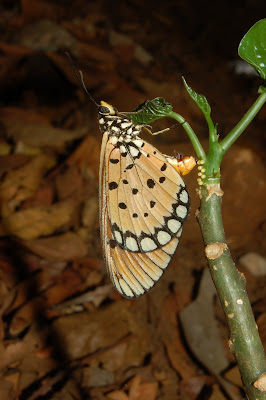The Western Ghats of southwestern India and the highlands of southwestern Sri Lanka, separated by 400 kilometers, are strikingly similar in their geology, climate and evolutionary history. The Western Ghats, known locally as the Sahyadri Hills, are formed by the Malabar Plains and the chain of mountains running parallel to India's western coast, about 30 to 50 kilometers inland. They cover an area of about 160,000 km² and stretch for 1,600 kilometers from the country's southern tip to Gujarat in the north, interrupted only by the 30 kilometers Palghat Gap.

Sri Lanka is a continental island separated from southern India by the 20-meter-deep Palk Strait. The island, some 67,654 km² in size, has been repeatedly connected with India between successive interglacials, most recently until about 7,000 years ago by a land bridge up to about 140 kilometers wide.
The Western Ghats mediates the rainfall regime of peninsular India by intercepting the southwestern monsoon winds. The western slopes of the mountains experience heavy annual rainfall (with 80 percent of it falling during the southwest monsoon from June to September), while the eastern slopes are drier; rainfall also decreases from south to north. Dozens of rivers originate in these mountains, including the peninsula’s three major eastward-flowing rivers. Thus, they are important sources of drinking water, irrigation, and power. The wide variation of rainfall patterns in the Western Ghats, coupled with the region’s complex geography, produces a great variety of vegetation types. These include scrub forests in the low-lying rainshadow areas and the plains, deciduous and tropical rainforests up to about 1,500 meters, and a unique mosaic of montane forests and rolling grasslands above 1,500 meters.
Precipitation across Sri Lanka is dependent on monsoonal winds, resulting in much of the island experiencing relatively low rainfall (less than 2,000 millimeters per year), except for the south-western “wet zone” quarter, where precipitation ranges to as much as 5,000 millimeters per year. While dry evergreen forests occupy almost the entirety of the “dry zone,” dipterocarp-dominated rainforests dominate the lowlands of the wet zone, and some 220 km² of tropical montane cloud forest still persist in the central hills, which rise to a maximum altitude of 2,524 meters.






No comments:
Post a Comment